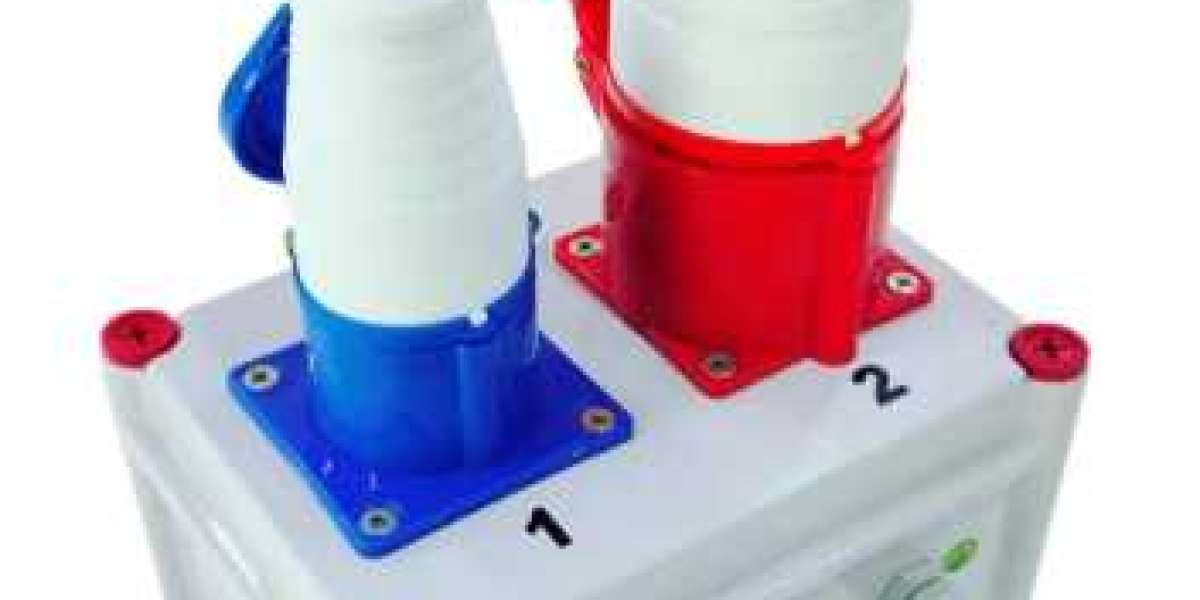In industrial settings where robust power distribution and fire safety must go hand in hand,the industrial socket box plays a pivotal role in preventing accidents and protecting assets.Beyond merely housing outlets,this enclosure integrates fire-resistant materials and strategic design features that contain sparks,resist flame spread,and ensure circuit integrity during emergency events.
As manufacturing floors become more automated and power demands increase,understanding how a properly specified socket enclosure contributes to overall fire mitigation can guide facility managers toward safer installations and uninterrupted operations.
One critical aspect of fire-safe socket boxes is the use of self-extinguishing polymers or metal alloys that inhibit flame propagation. When an electrical fault generates heat or a short circuit occurs,these materials limit the spread of fire to adjacent wiring and equipment. Inside the box,specially shaped barriers and insulating sleeves separate live conductors,preventing arcing from jumping between circuits.This compartmentalization also allows localized containment,so that if a single outlet fails catastrophically,neighboring circuits remain protected and essential machines stay powered.
Proper ventilation within the enclosure ensures that heat generated by plug-in devices or protective relays does not accumulate and reach ignition temperatures.Strategically placed vents with flame arrestors allow air to circulate while blocking flame fronts. Fire codes often mandate specific clearances and vent dimensions to achieve the necessary airflow without compromising containment. Technicians must verify that these vents remain unobstructed and free from debris during routine inspections to maintain the enclosure's fire-resistant performance.
Ground fault protection and overcurrent devices inside the socket module provide an additional layer of defense. When a fault current exceeds safe limits,these safety components interrupt the circuit within milliseconds,extinguishing arcs before they ignite surrounding materials.Positioning these devices close to the receptacle inside the box reduces the length of unprotected wiring,minimizing the energy available to sustain a fire. Combined with fire-rated gaskets on covers,this approach creates a sealed barrier that keeps sparks and hot gases contained.
Cable entry points deserve attention when fire safety is a priority. Each conduit knockout must be fitted with fire-stop glands or flange seals that restore the enclosure's fire rating after installation. These seals prevent flame and smoke from traveling through openings around cables and conduits. During cable replacement or maintenance,facility teams must replace damaged seals immediately to preserve the enclosure's protective envelope and comply with insurance and regulatory requirements.
Mounting location influences fire performance as well. Installing the socket box on non-combustible walls or within metal racks reduces the risk of fire spreading from nearby combustible materials. In areas where flammable substances are present,selecting enclosures with higher fire resistance allows operators to maintain safe distances between power sources and hazardous processes. Placing multiple boxes within a fire-resistant zone supports compartmentation,ensuring that even if one cabinet succumbs,fires remain localized.
Integration with fire alarm and suppression systems further enhances safety. Some industrial socket boxes include terminals for connection to fire detection loops,allowing smoke or heat detectors mounted above machines to feed signals directly through the same power distribution network. In automatic suppression scenarios,control valves for inert gas or mist systems can draw power from the same module,ensuring rapid activation when sensors detect fire.
This coordinated design streamlines wiring and reduces installation complexity.Regular testing and maintenance underpin the reliability of fire-safe power enclosures. Infrared inspections reveal hotspots at terminal connections before they fail,while visual checks confirm gasket integrity and vent condition. Circuit breakers and ground fault devices require trip-time testing to ensure they operate within specified parameters. Records of these tests support compliance audits and give managers confidence that the enclosure will perform during an emergency.
Emerging smart factory initiatives bring additional fire safety considerations. When connected devices,such as network cameras or remote sensors,draw power from the socket box,firmware-driven load monitoring can identify unusual current patterns that precede overheating.Web-based dashboards display real-time data on individual outlets,alerting staff to investigate before a thermal incident occurs. Integrating these predictive analytics features with fire-mitigation strategies closes the gap between detection and prevention.
Aesthetic and ergonomic factors matter,too. Socket enclosures designed with smooth contours and flush covers reduce dust accumulation and simplify cleaning in sterile production lines or food processing environments.Covers that lock securely protect against accidental opening during high pressure washdowns,preventing water ingress that could lead to electrical faults. Well placed indicator lights show power status without requiring door opening,allowing operators to confirm circuit health at a glance.
When evaluating options,facility planners should look for enclosures certified by recognized testing authorities for fire resistance and electrical safety. Labels indicating fire performance ratings guide selection for specific applications,from light duty office spaces to heavy industrial workshops. Working with a trusted supplier ensures that documentation and technical support accompany each enclosure,aiding smooth project approval and installation.
Choosing a fire resistant power distribution solution benefits both safety and productivity. A well engineered industrial socket box not only contains electrical faults but also integrates seamlessly with broader facility protection systems. By investing in such a module,operations teams can reduce downtime risk,protect valuable assets,and foster a workplace culture that prioritizes prevention over reaction. For detailed specifications and customization options that meet your fire safety needs,visit www.nante.com/product/ .







